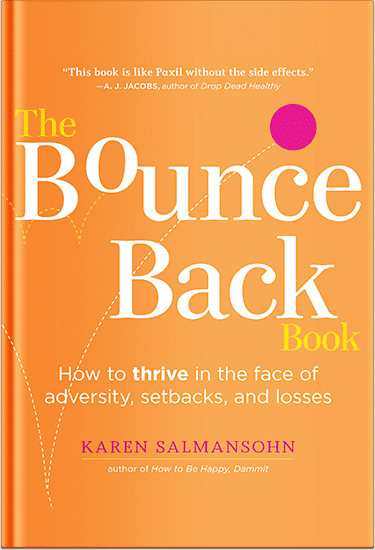 In today’s fast-paced world, it’s easy to overlook signs and symptoms of potentially dangerous health conditions. One such health concern that often flies under the radar is the formation of blood clots. Although they may seem like a distant problem to many, blood clots can strike anyone at any time, and they can have severe and life-threatening consequences.
In today’s fast-paced world, it’s easy to overlook signs and symptoms of potentially dangerous health conditions. One such health concern that often flies under the radar is the formation of blood clots. Although they may seem like a distant problem to many, blood clots can strike anyone at any time, and they can have severe and life-threatening consequences.
For those constantly on the go—whether you’re working long hours, managing a busy household, or squeezing in gym sessions between meetings—it’s essential to understand how blood clots develop and their associated risks. In particular, knowing the early signs of a blood clot in the foot can make a difference in prevention and timely treatment.
As a bestselling wellness author with around 2 million books sold globally, I am passionate about helping people lead happier and healthier lives.
That’s why I’ve put together this article to explain blood clots.
What Are Blood Clots?
Blood clots are masses of blood that have transformed from a fluid to a more gel-like state. Clotting is a regular occurrence in the body to stop blood flow if you get injured, but it becomes dangerous if a clot develops in the bloodstream and blocks blood flow. The risk rises when these clots develop in veins or arteries, particularly in areas such as the lower limbs, feet, or lungs, because they can block the circulation of oxygen-rich blood to vital organs.
Blood clots can develop due to many factors. They include immobility, injury, surgery, and some medications. Plus other diseases like obesity, diabetes, or high cholesterol. This can happen while traveling by plane, working for a long time at the office, or after surgery. All these can lead to clot formation. For active people, the risk of prolonged time of inactivity – be it at the office or during a trip – increases the stakes. One has to know the prominent signs and symptoms. Because early detection of a blood clot may keep you alive.
How Does This Risk Affect Busy Lifestyles
In today’s busy world, people have many things to do. And if you are involved in many activities, you may hardly have time to take care of your health. However, the potential consequences, including those for blood clotting, can be severe if ignored. Sedentary work, traveling by flight for business, or lack of physical activity because of a tight schedule can predispose one to develop clots in the lower limbs.
Some people with busy work schedules spend most of their time sitting at their desks. Or those who often travel may develop deep vein thrombosis (DVT). This type of clot typically develops in deep veins of the legs. It can potentially cause severe complications, such as a pulmonary embolism (PE), in which a blood clot travels to the lungs. DVT is commonly referred to as the ‘silent killer’ because the first signs and symptoms are not very obvious. And it could be mistaken for other less severe conditions. For example: a muscle pull or mild leg discomfort.
Understanding the Signs of a Blood Clot
The symptoms of a blood clot can vary depending on where the clot is located in the body. But for those at risk of developing one in the foot or leg, here are some of the most common indicators: The symptoms of a blood clot can vary depending on where the clot is located in the body. But for those at risk of developing one in the foot or leg, here are some of the most common indicators:
- Swelling: If you urgently feel or see that your foot, ankle, or leg swells up, it may be that a clot is preventing blood from flowing into the area. Many factors can cause swelling, so any new and sudden form of swelling should not be taken lightly if it is localized to one leg or foot.
- Pain: It is essential to know that one of the most noticeable symptoms of a blood clot in the foot is severe, stabbing pain. This may be challenging to differentiate from muscle stiffness or exhaustion, but clot-associated pain is usually localized to a specific area and worsens with time or activity.
- Redness and Warmth: Another sign to watch out for is some form of inflammation in the affected region or it feeling warmer than other parts of the skin. These are some of the signs that your body gives when things are not well. There may be a clot forming.
- Discoloration: The affected skin area may sometimes develop bluish or reddish coloration around the clot site. This happens because the blood flow is cut off from the area, which results in an absence of oxygen, hence the formation of a different color.
Preventing Blood Clots in a Busy Life
Even though blood clots are dangerous and fatal, there are ways to significantly reduce the risk of them forming, even if you travel frequently. Small changes in one’s daily routine can go a long way in improving the condition of the circulatory system.
First, if your work involves sitting for several hours, try to get up and walk around once an hour. Remind yourself to get up, walk around, or stretch to ensure your blood flows even if you are not moving. For those who often use a car or plane, stretch your legs as much as possible during the journey. Some leg exercises that can be done include flexing your feet, wiggling the toes, or even walking down the plane aisle.
Conclusion
One might think that blood clots rarely affect one. But for those with active working schedules, it is something to worry about. Whether a corporate employee is stuck at a desk, a business person flying for meetings, or a mother of young children, awareness of the dangers and signs of blood clots, especially a blood clot in the foot, is most important. Being aware of the signs, taking preventive actions, and going for check-ups when required can significantly affect your wellbeing. Thus, as you continue dominating your busy life, do not underestimate the voice of your body. It may be trying to tell you something important.
Stay Calm in Tough Times
Explore my bestselling and therapist recommended audio and video program: The Anxiety Cure Course.
P.S. Before you zip off to your next Internet pit stop, check out these 2 game changers below - that could dramatically upscale your life.
1. Check Out My Book On Enjoying A Well-Lived Life: It’s called "Your To Die For Life: How to Maximize Joy and Minimize Regret Before Your Time Runs Out." Think of it as your life’s manual to cranking up the volume on joy, meaning, and connection. Learn more here.
2. Life Review Therapy - What if you could get a clear picture of where you are versus where you want to be, and find out exactly why you’re not there yet? That’s what Life Review Therapy is all about.. If you’re serious about transforming your life, let’s talk. Learn more HERE.
Think happier. Think calmer.
Think about subscribing for free weekly tools here.
No SPAM, ever! Read the Privacy Policy for more information.
One last step!
Please go to your inbox and click the confirmation link we just emailed you so you can start to get your free weekly NotSalmon Happiness Tools! Plus, you’ll immediately receive a chunklette of Karen’s bestselling Bounce Back Book!


 In today’s fast-paced world, it’s easy to overlook signs and symptoms of potentially dangerous health conditions. One such health concern that often flies under the radar is the formation of blood clots. Although they may seem like a
In today’s fast-paced world, it’s easy to overlook signs and symptoms of potentially dangerous health conditions. One such health concern that often flies under the radar is the formation of blood clots. Although they may seem like a 